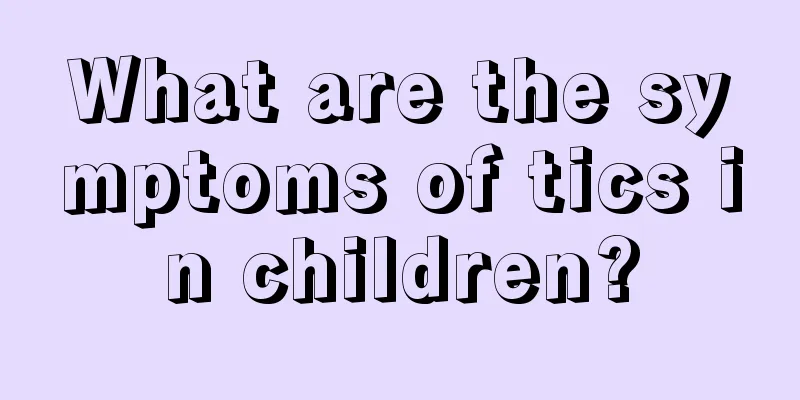What is scarlet fever? You should know these symptoms

|
Scarlet fever is a contagious respiratory disease that occurs in children. The incubation period of the disease is generally 2 to 5 days. High fever and pharyngitis are typical manifestations. In addition, a rash may appear, initially behind the ears, on the chest, and at the base of the neck. 1. Fever: 85% to 97% of patients have fever, which is mostly persistent and can be high or low. In recent years, the number of patients with mild and short fever has increased. Accompanied by headache, lack of appetite and general discomfort. The pulse rate increases often exceeds the rate of increase in body temperature, especially in children. The intensity and duration of the fever are consistent with the severity and changes of the rash, and the fever usually lasts for 1 week. 2. Pharyngitis 98% of patients suffer from pharyngitis. The throat initially feels dry, followed by pain, which worsens when swallowing. About 80% of patients have enlarged tonsils, which may have grayish white or yellowish white spots and flakes of purulent exudate that are easy to wipe off. 3. Rash Generally, before the rash appears, there is an intramucosal rash, which is manifested by congestion of the soft palate mucosa, mild swelling, and millet-sized red rashes or bleeding spots. Rash is one of the most important symptoms of scarlet fever. 100% of patients have a rash, most of which appear on the second day of illness, starting behind the ears, base of the neck, and upper chest, spreading to the chest, back, and upper limbs within a few hours, and reaching the lower limbs in about 24 hours. The typical rash manifests as dense and evenly distributed, hat pin-sized dot-like congested red rashes on the basis of redness and congestion all over the skin. The rashes fade when pressed, and small red dots appear when the pressure is removed, and then merge into a red area. In most patients, the rash is distributed all over the body. The rash is mostly macules, but "chicken-like rash" with raised protrusions can also be seen, and occasionally "miliary rash" with small pus heads, which is related to skin nutrition and hygiene. In severe cases, hemorrhagic rash may be seen. The skin often feels itchy. In 30% to 60% of patients, the rash is dense and often accompanied by subcutaneous bleeding in the skin folds such as the armpits, elbows, and groin, forming purple-red lines, which are called "linear rash" or "Patkin lines." The rash is most obvious on the neck, trunk, skin folds and inner thighs, and is sparse on the distal limbs. The face is congested and flushed, with a small amount of rash. The area around the mouth and nose appears pale in comparison, forming the so-called "perioral pale circle". The rash usually reaches its peak after 48 hours, then fades in the order in which the rash appeared, and may disappear completely in 2 to 4 days. Severe cases may last for a week or even longer. In mild cases, the rash is minimal and only occurs on the face, neck, and chest, and disappears within a few hours. After the rash subsides, the skin begins to peel. The order of peeling areas is the same as the order of rash, first the neck and chest and then the limbs. The degree of peeling is directly proportional to the severity of the rash. In mild cases, it appears like bran crumbs, while in severe cases, it may become flakes. The neck and trunk are often bran-like, and the limbs, especially the palms and soles of the feet, are often large and flake-like, sometimes even in the shape of gloves or socks. There is less rash on the face, but fine flaking may also occur. In severe cases, peeling can last for 3 to 5 weeks, and hair may also fall off temporarily. At the same time as the rash occurs, the tongue may be covered with white coating and the nipples may become red and swollen, protruding beyond the white coating, especially at the tip and edges of the tongue. This is called "strawberry tongue". On the third day, the white coating begins to fall off, and the surface of the tongue becomes smooth and flesh-red. There may be superficial ruptures, and the nipples remain raised, which is called "bayberry tongue". Some patients have swollen and tender cervical and submandibular lymph nodes, but most of them are non-suppurative. The clinical manifestations vary greatly, and the prognosis is also different. |
<<: Symptoms of excessive blood lead levels, normal functions are affected
>>: Scarlet fever sequelae, these complications are very harmful
Recommend
What to do if a one-month-old baby catches a cold
Because children's body parts are not fully d...
How to correct a child’s crooked legs?
Why do many adults have ugly legs? The main reaso...
What are the benefits of outdoor activities in kindergarten?
When the baby reaches a certain stage of growth, ...
What is the value of pathological jaundice?
Jaundice is a very common disease in our lives, a...
What should I do if a child has a shark fin stuck in his throat?
Everyone knows the many benefits of eating fish f...
What are the recipes for 13-month-old babies?
As the child continues to grow, the nutrients he ...
Children have diarrhea after taking anti-inflammatory drugs
We all know that anti-inflammatory drugs are an i...
How can children grow taller quickly
How tall a child can grow depends on many factors...
How to treat baby skin allergies?
Babies' skin is still relatively tender, so y...
What causes heavy breathing when sleeping?
Parents may be worried when their babies breathe ...
Is it serious if my baby is mycoplasma positive?
After having a child at home, you should take the...
How to teach your baby to suck milk by sucking the areola
Many new mothers think that as long as they have ...
What are the characteristics of neonatal pathological jaundice?
Neonatal pathological jaundice is a problem that ...
Is it useful to drink garlic water when children have a cough?
Coughing happens from time to time. Since childre...
Causes of baby's forehead protrusion
It is not easy for many parents to notice that th...









